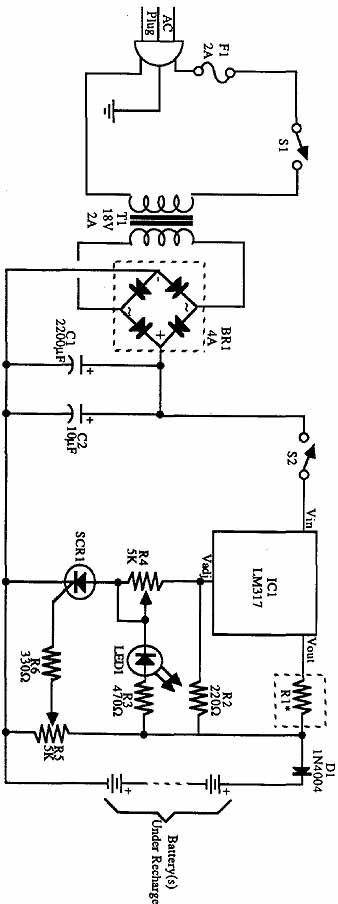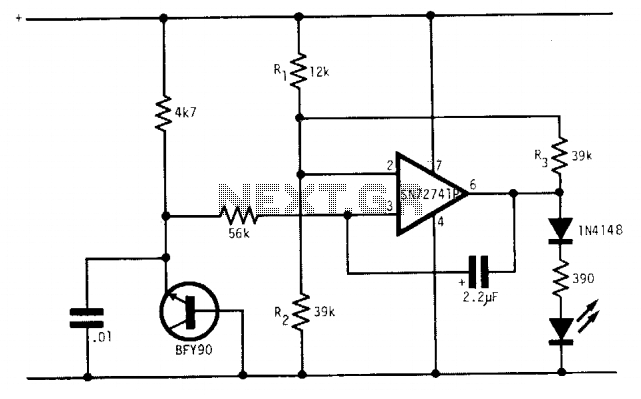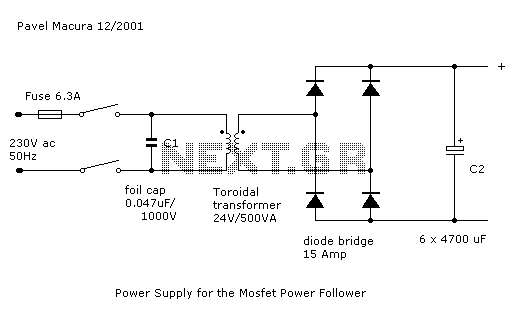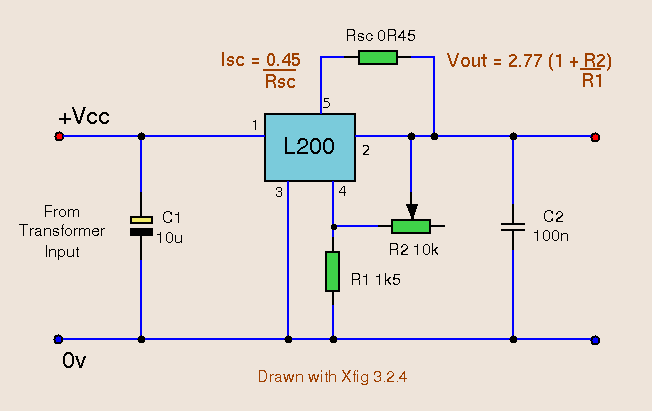
bipolar 15 v and 5v from car battery supply

Bipolar +/- 15V and 5V from car battery supply power supply. Refer to the specified page for an explanation of the related circuit diagram.
The described power supply circuit is designed to provide bipolar voltage outputs of +/- 15V and a stable 5V from a standard car battery, which typically delivers a nominal voltage of 12V. This type of power supply is essential for various automotive electronic applications that require both positive and negative voltage rails.
The circuit architecture typically includes a step-up (boost) converter to generate the positive voltage rail (e.g., +15V) and an inverter or a charge pump to create the negative voltage rail (e.g., -15V). The 5V output can be derived from a linear voltage regulator or a buck converter, ensuring that it remains stable under varying load conditions.
Key components in this circuit may include:
1. **Voltage Regulators**: Linear regulators such as the LM7815 for +15V and LM7915 for -15V, along with an LM7805 for the 5V output, are commonly used. These components regulate the output voltage by dissipating excess voltage as heat.
2. **Boost Converter**: A boost converter circuit can be implemented to step up the 12V from the car battery to +15V. This typically involves an inductor, a switch (transistor), a diode, and a capacitor to smooth the output.
3. **Charge Pump/Inverter**: To create the -15V rail, a charge pump can be utilized, which uses capacitors and switches to invert the voltage. Alternatively, a dedicated inverter IC can be employed for this purpose.
4. **Filtering Capacitors**: Capacitors are essential for filtering out noise and providing stability to the output voltage. They should be placed close to the output terminals of the regulators.
5. **Protection Diodes**: Diodes may be included to protect against reverse polarity and to prevent back EMF from damaging sensitive components.
6. **Heat Sinks**: If linear regulators are used, heat sinks should be installed to dissipate heat generated during voltage regulation, particularly when the load current is significant.
The circuit should also include proper input and output connections, ensuring that the power supply can interface seamlessly with the intended load. Additionally, appropriate fuses or circuit breakers should be incorporated to protect the circuit from overcurrent conditions.
Overall, this bipolar power supply design is crucial for powering various automotive electronic devices, ensuring reliable operation and performance.Bipolar +/- 15V and 5V from Car Battery supply power supply. Go to that page to read the explanation about above power supply related circuit diagram. 🔗 External reference
The described power supply circuit is designed to provide bipolar voltage outputs of +/- 15V and a stable 5V from a standard car battery, which typically delivers a nominal voltage of 12V. This type of power supply is essential for various automotive electronic applications that require both positive and negative voltage rails.
The circuit architecture typically includes a step-up (boost) converter to generate the positive voltage rail (e.g., +15V) and an inverter or a charge pump to create the negative voltage rail (e.g., -15V). The 5V output can be derived from a linear voltage regulator or a buck converter, ensuring that it remains stable under varying load conditions.
Key components in this circuit may include:
1. **Voltage Regulators**: Linear regulators such as the LM7815 for +15V and LM7915 for -15V, along with an LM7805 for the 5V output, are commonly used. These components regulate the output voltage by dissipating excess voltage as heat.
2. **Boost Converter**: A boost converter circuit can be implemented to step up the 12V from the car battery to +15V. This typically involves an inductor, a switch (transistor), a diode, and a capacitor to smooth the output.
3. **Charge Pump/Inverter**: To create the -15V rail, a charge pump can be utilized, which uses capacitors and switches to invert the voltage. Alternatively, a dedicated inverter IC can be employed for this purpose.
4. **Filtering Capacitors**: Capacitors are essential for filtering out noise and providing stability to the output voltage. They should be placed close to the output terminals of the regulators.
5. **Protection Diodes**: Diodes may be included to protect against reverse polarity and to prevent back EMF from damaging sensitive components.
6. **Heat Sinks**: If linear regulators are used, heat sinks should be installed to dissipate heat generated during voltage regulation, particularly when the load current is significant.
The circuit should also include proper input and output connections, ensuring that the power supply can interface seamlessly with the intended load. Additionally, appropriate fuses or circuit breakers should be incorporated to protect the circuit from overcurrent conditions.
Overall, this bipolar power supply design is crucial for powering various automotive electronic devices, ensuring reliable operation and performance.Bipolar +/- 15V and 5V from Car Battery supply power supply. Go to that page to read the explanation about above power supply related circuit diagram. 🔗 External reference





